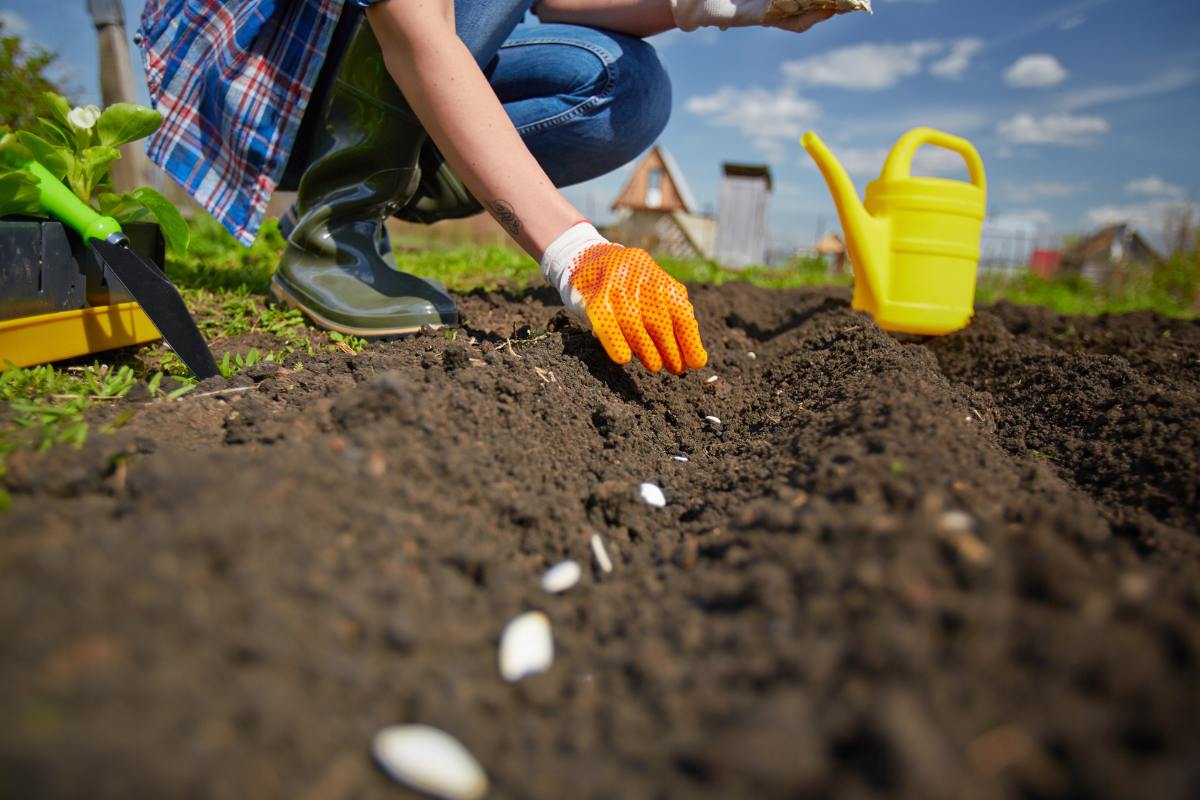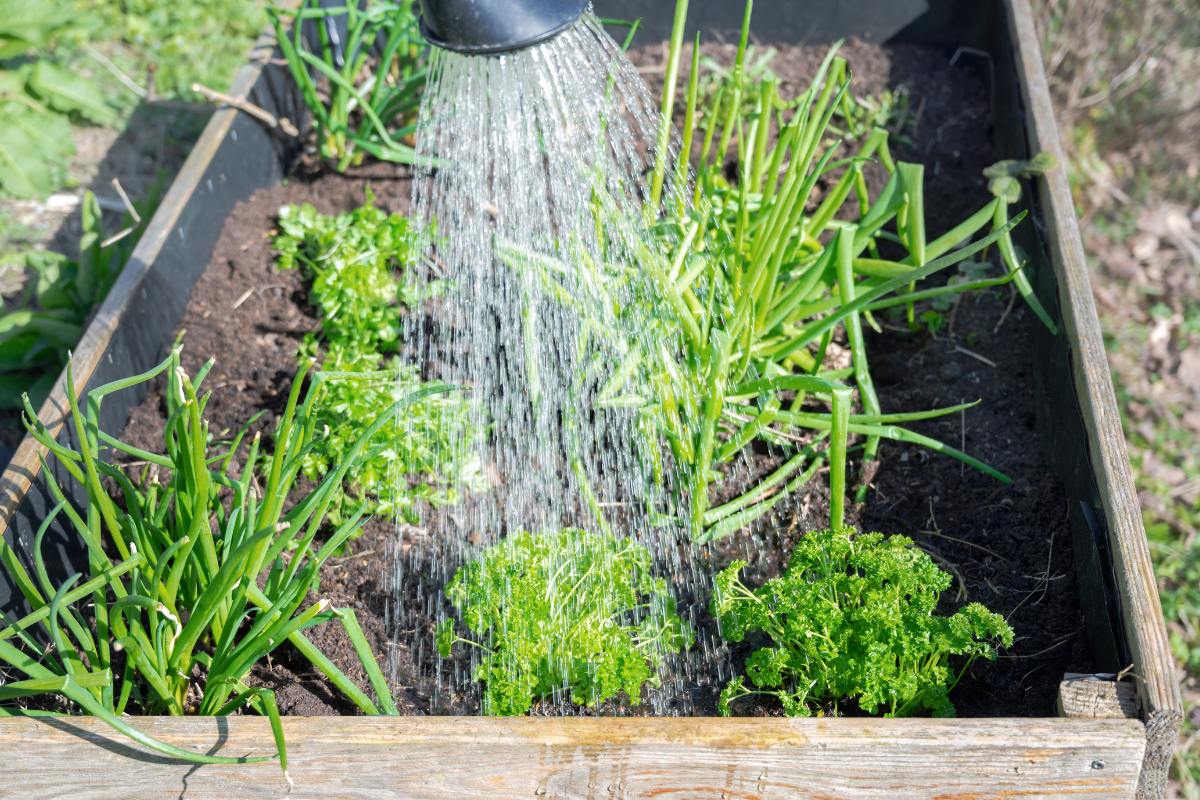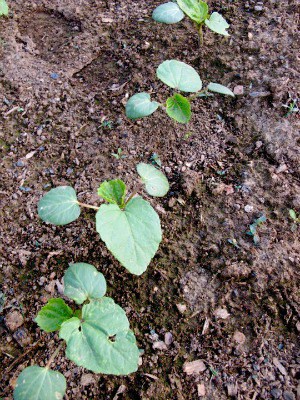Starting seeds doesn’t only mean indoors. If you are having trouble planting seeds outside, here’s my guide to the top seed sowing problems- and how to fix them.
In the 4 Most Common Seed Starting Problems and How to Fix Them, I discussed the problems home gardeners face when starting their seeds indoors.
This site contains affiliate links. If you make a purchase using one of these links, I may earn a commission. Please see my disclosure page for more information about cookies collected and our privacy policy.
But some seeds, such as corn, beans, greens and root crops do much better when they are directly sown outside.
But directly sowing doesn’t mean you can just toss the seeds out and forget about them! Germination is a delicate process and raising up a healthy seedling into a productive plant takes some work.
First, make sure you are starting with a good quality seed- nothing old or starting to mold!
Now let’s dig in to some of the outdoor seed sowing problems you might be faced with and how you can fix them!
5 Most Common Outdoor Seed Sowing Problems…and How to Fix Them
Incorrect Soil Temperature
Just as with starting seeds indoors, temperature plays a big part in the germination process of direct sown seeds as well.
Each crop has an ideal germination temperature, but most seeds like soil that has been warmed and is no longer cold and wet from the winter freezes- this even goes for cool weather crops that like cooler temperatures!
If you jump the gun your seeds will sit in the cold soil until it reaches the correct germination temperature- and chances are it will begin to mold or rot while it sits!
How Can You Fix This?
For warmer weather crops, don’t plant too early. Just because the frosts are over doesn’t mean that it is time to sow your seeds. Make sure the soil is sufficiently warmed before putting your seeds in the ground.
You can also grow in raised beds or in hills. The higher soil level of raised beds will warm more quickly so you can plant sooner.
Grow under cloches or in a cold frame if you simply must plant early.
My Yearly Gardening Planner is perfect for keeping track of everything- from your seed inventory to planting dates to disease and pest problems. Start planning your best garden today!
Incorrect Planting Depth
Seeds are not all created equal. If you read the back of your seed packets you will notice that there are often specific directions on planting depth.
Some varieties need some light to germinate, some don’t.
And most seeds, if planted too deep, will run out of energy before every emerging from under the soil.
How Can You Fix This?
Follow the directions on your seed packet- this will ensure you are planting correctly for the exact seed you are sowing.
As a general rule only plant a seed a deep as it is wide. This means that tiny chamomile seeds are sprinkled on the soil’s surface and pressed in, while pumpkin seeds are planted almost an inch into the soil.
For most small seeds such as lettuce, carrots, and many herbs, simply sprinkle the seeds on top of the soil and add a very light dusting of peat moss, compost, or loose soil on top.
Incorrect Watering and Moisture Levels
Moisture plays a big part in germination and in the health of your seedlings. When starting inside you can keep this under control, but outside you are at the mercy of the weather.
Wet, poorly drained soil can spell death to most seeds, so when planting be sure your soil isn’t sopping wet and ensure that you have adequate drainage.
If your seeds are sprouting and then dying you can still be dealing with the diseases that come from overwatering- just like when you start seeds indoors.
How Can You Fix This?
Make sure to dig enough organic matter into your soil- this both improves drainage in wet soils and holds water longer in dry soils.
Don’t plant in too-wet soil, such as after a large rain or big snow melt.
On the flip side, seeds do need moisture to sprout, so if there is no rain in the forecast be sure to give your seeds a light watering daily until they have established a strong root system.
Related Reading: How to Grow More Food in Less Time
Poor Soil
Seeds can sprout- and sometimes do better- without an over abundance of nutrients. But once they have germinated and begun to grow, your soil quality will determine just how strong and healthy they will become.
If your seeds are sprouting but then staying stunted and very small, chances are you are dealing with poor soil quality.
How Can You Fix This?
Dig in plenty of organic matter- manure from your livestock, well-rotted compost, etc.
Check out 8 Ways to Improve Your Garden Soil for Free for some ideas
Give your soil extra doses of nutrients it may be deficient in. Check out Soil Nutrient Deficiencies for more information
Too Many Pests
Sometimes you can do everything right- you have the perfect soil temperature, moisture level, and nutrients and your seeds STILL don’t sprout.
Outside your seeds are not only facing the elements, but also pests.
Squirrels, insects, birds, rodents, even your own cats or chickens can cause some problems.
Plenty of times I have planted bean or squash seeds in the ground only to have them be carried away by ants!
Related Reading: How to Get Rid of These Garden Pests- Naturally!
How Can you Fix This?
Grow under cloth to keep the pests away at this early stage. This is a great option for brassica crops and others that don’t require pollination. Plus it keeps the cabbage moths off of them- so no more caterpillars!
Keep your garden behind a fence or netting to keep larger pests away. We had to fence our garden in to keep the chickens and deer out.
Again, make sure your soil is healthy. Healthy soil will go a long way in preventing soil-bound insect pests.
Have you come across these problems when it comes to direct sowing in your garden? How do you fix them?







I am always confused when to water.I think I water to much.I normally water in the morning every morning with rain water and a garden jug. About 3 gallons for my 10 ×30 foot garden. Although stunned they look well.